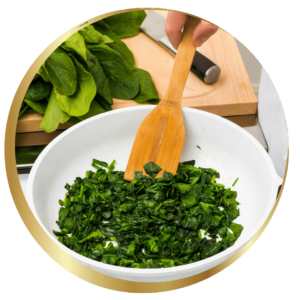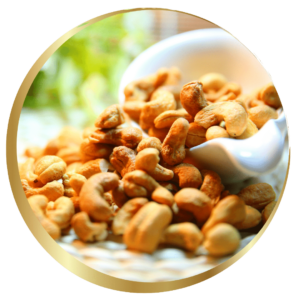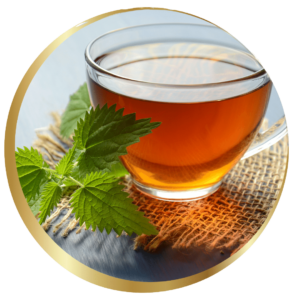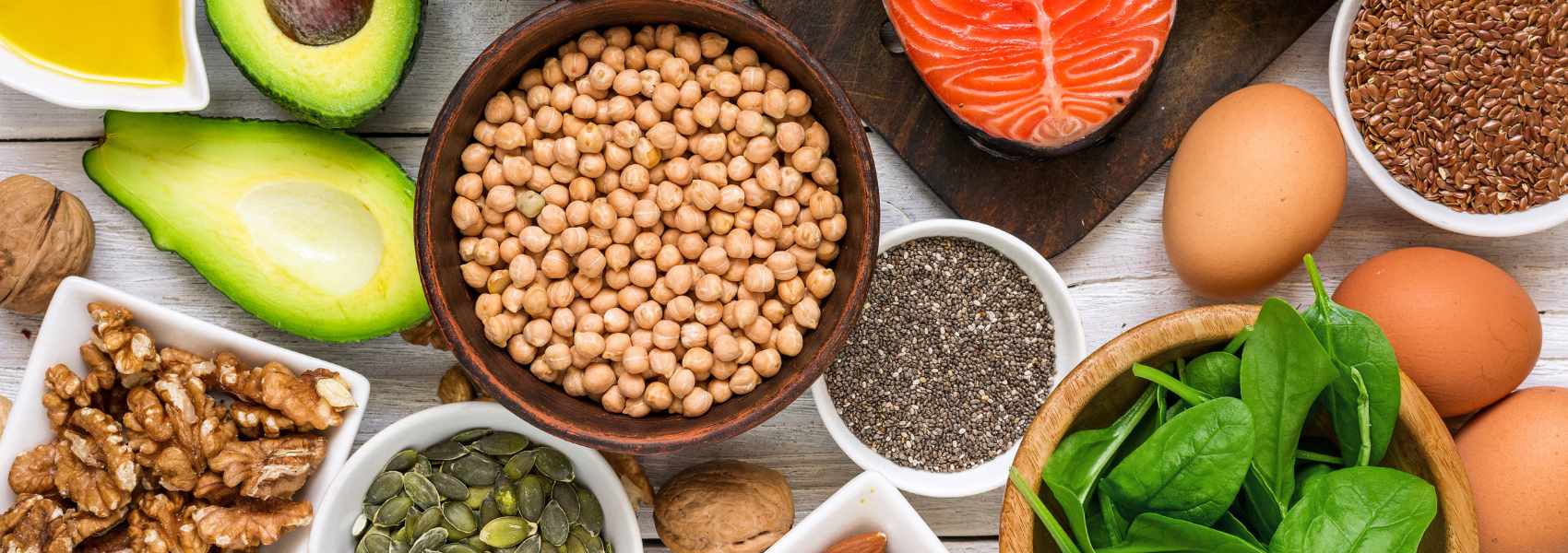Have You Ever Wondered What Are the Best Foods for
Easy Weight Loss?
Starting a weight loss journey doesn’t mean you have to give up delicious food. In fact, there are many healthy foods that can support your efforts while keeping your taste buds satisfied. Adding these foods into your diet can help you shed those extra pounds in a sustainable and enjoyable way. Let’s explore 10 such foods along with creative ways to include them in your meals.
1. Lean Protein

- Burns More Calories: Protein requires more energy to digest than carbs or fats, leading to more calories burned3.
- Muscle Preservation: Protein helps preserve muscle mass during weight loss, which is crucial for a higher metabolism3.
- Satiety: Protein-rich foods keep you feeling fuller for longer3.
Easy Inclusion: Grill or bake chicken breast as a satisfying main dish, incorporate tofu or legumes into stir-fries and salads, or enjoy a turkey wrap for a quick and protein-packed meal.
2. Leafy Greens

- High Fiber Content: Leafy greens like spinach, kale, and Swiss chard are loaded with fiber, which promotes fullness and reduces overeating12.
- Low Caloric Density: These greens are low in calories, allowing you to consume larger portions1.
- Rich in Nutrients: Packed with vitamins, minerals, and antioxidants needed for facilitating weight loss1.
Easy Inclusion: Add a handful of leafy greens to your morning smoothie, make a nutrient-packed salad as a side dish for lunch or dinner, or use lettuce leaves as a wrap for your favorite fillings.
3. Berries

- Fiber-Rich: Berries are high in soluble fiber, which slows digestion and helps control blood sugar levels, curbing cravings4.
- Antioxidants: Antioxidants in berries combat inflammation, promoting better metabolic function4.
- Low-Calorie Sweetness: Their natural sweetness satisfies sugar cravings without the calorie overload4.
Easy Inclusion: Mix a variety of berries into your morning yogurt, blend them into a smoothie, or enjoy them as a topping for oatmeal or whole-grain pancakes. Even better, frozen berries are just as good as fresh without the short shelf life! Because berries are so packed with benefits, they’re one of the top foods for easy weight loss.
4. Whole Grains

- Fiber and Satiety: Whole grains contain both soluble and insoluble fiber, promoting satiety and regular digestion5.
- Stable Energy: The complex carbohydrates in whole grains provide sustained energy levels, reducing the urge for quick snacks5.
- Blood Sugar Control: The gradual release of glucose supports stable blood sugar levels, preventing spikes and crashes that can lead to overeating5.
Easy Inclusion: Replace refined grains with whole grains in your meals—enjoy oatmeal or whole-grain cereal for breakfast, opt for whole wheat bread for sandwiches, and choose brown rice or quinoa as your base for lunch and dinner.
5. Nuts and Seeds

- Healthy Fats: Nuts and seeds offer healthy monounsaturated and polyunsaturated fats that help you feel satisfied6.
- Nutrient Boost: They provide essential nutrients like omega-3 fatty acids, which play a role in metabolism regulation6.
- Crunchy Satisfaction: The texture and flavor of nuts and seeds add a satisfying element to meals and snacks6.
Easy Inclusion: Sprinkle chia seeds or chopped nuts on your morning yogurt or cereal, snack on a handful of almonds, walnuts, or pumpkin seeds, or incorporate them into homemade granola or energy bars.
6. Greek Yogurt

- Protein-Packed: Greek yogurt is rich in protein, supporting muscle preservation and metabolism during weight loss7.
- Probiotic Benefits: Probiotics promote a healthy gut, which has been linked to weight management and reduced inflammation7.
- Creamy Indulgence: Its creamy texture satisfies cravings for richer foods without the excess calories7.
Easy Inclusion: Enjoy Greek yogurt as a breakfast bowl topped with berries and a drizzle of honey, use it as a creamy base for smoothies, or create a yogurt parfait with layers of fruit and granola. Additionally, you can use greek yogurt as a substitute for sour cream!
7. Avocado

- Healthy Fats: Avocado’s monounsaturated fats help control appetite and enhance the absorption of fat-soluble vitamins8.
- Fiber Content: Avocado is a good source of dietary fiber, contributing to satiety and digestive health8.
- Heart Health: Its nutrient profile supports heart health, which is essential for overall well-being during weight loss8.
Easy Inclusion: Spread mashed avocado on whole grain toast and top with a sprinkle of salt and pepper, add avocado slices to salads, or blend avocado into a creamy dressing for your favorite veggies.
8. Cruciferous Vegetables:

- Fiber and Volume: Cruciferous veggies are rich in fiber and water, adding volume to meals without many calories9.
- Metabolic Benefits: Compounds found in cruciferous vegetables may aid in boosting metabolism9.
- Detoxification Support: These vegetables contain antioxidants that support the body’s natural detoxification processes9.
Easy Inclusion: Roast broccoli, cauliflower, or Brussels sprouts with a drizzle of olive oil and your favorite spices, steam them as a side dish, or add them to stir-fries for added crunch.
9. Capsaicin

- Capsaicin’s Role: Capsaicin, found in chili peppers, can temporarily boost metabolism and increase calories burned10.
- Thermogenic Effect: Capsaicin induces a thermogenic effect, raising body temperature and promoting fat oxidation10.
- Appetite Control: Spices like cayenne pepper can reduce appetite and cravings, aiding portion control10.
Easy Inclusion: Add a pinch of cayenne pepper to savory dishes (careful, it’s very hot!) or add chilis to meals.
10. Teas and Coffee

- Caffeine Boost: Teas and coffee contain caffeine, which temporarily boosts metabolism and increases fat burning.
- Appetite Suppression: Caffeine can reduce feelings of hunger, aiding in portion control.
- Increases Calories Burned: Certain teas like green tea can boost your metablism and promote the increase of calories burned11.
Easy Inclusion: Sip on green tea or black coffee as a morning or midday pick-me-up, or enjoy a cup of herbal tea in the evening to unwind. However, don’t undo all your good work by adding too much cream and sugar!
Conclusion? Foods for Easy Weight Loss Can Be Tasty
These nutrient-packed foods, along with metabolism-boosting spices, and teas and coffee, are more than just delicious additions to your meals; they’re allies in your weight loss journey. Integrating these foods into your daily meals can help kickstart your weight loss.
However, remember that no single food is a magic solution. A well-rounded approach that combines these foods with regular physical activity and mindful eating is key to achieving sustainable results. If you’re seeking personalized guidance or need more support on your journey, don’t hesitate to reach out to us. Our team of experts is here to help you achieve your health and wellness goals.
Looking for weight loss help? Contact us!
[formidable id=1]
References:
Footnotes
-
Bazzano, L. A., Serdula, M. K., & Liu, S. (2003). Dietary intake of fruits and vegetables and risk of cardiovascular disease. Current Atherosclerosis Reports, 5(6), 492-499.
-
Rolls, B. J., Ello-Martin, J. A., & Tohill, B. C. (2004). What can intervention studies tell us about the relationship between fruit and vegetable consumption and weight management?. Nutrition Reviews, 62(1), 1-17.
-
Halton, T. L., & Hu, F. B. (2004). The effects of high protein diets on thermogenesis, satiety and weight loss: a critical review. Journal of the American College of Nutrition, 23(5), 373-385.
-
Cassidy, A., Mukamal, K. J., Liu, L., Franz, M., Eliassen, A. H., & Rimm, E. B. (2013). High anthocyanin intake is associated with a reduced risk of myocardial infarction in young and middle-aged women. Circulation, 127(2), 188-196.
-
Tighe, P., Duthie, G., Vaughan, N, Brittenden, J., Simpson, W. G., Duthie, S., & Mutch, W. (2010). Effect of increased consumption of whole-grain foods on blood pressure and other cardiovascular risk markers in healthy middle-aged persons: a randomized controlled trial. The American Journal of Clinical Nutrition, 92(4), 733-740.
-
Sabaté, J., Oda, K., & Ros, E. (2010). Nutritional status and dietary intakes of vegetarians or vegan of different ages and genders in a Spanish population. Nutrición Hospitalaria, 25(3), 445-452.
-
Rutherfurd-Markwick, K. J., & Hendriks, W. H. (2012). Morenga, L. T., Williams, S., Brown, R. C., & Mann, J. (2013). Effect of increasing dietary fiber on glycemic control in type 2 diabetes: a systematic review and meta-analysis of randomized controlled trials. Diabetes Care, 36(2), 472-482.
-
Dreher, M. L., & Davenport, A. J. (2013). Hass avocado composition and potential health effects. Critical Reviews in Food Science and Nutrition, 53(7), 738-750.
-
Hayes, J. D., Kelleher, M. O., & Eggleston, I. M. (2008). The cancer chemopreventive actions of phytochemicals derived from glucosinolates. European Journal of Nutrition, 47(Suppl 2), 73-88.
-
Whiting, S., Derbyshire, E. J., & Tiwari, B. (2012). Capsaicinoids and capsinoids. A potential role for weight management? A systematic review of the evidence. Appetite, 59(2), 341-348.
-
Hursel, R., Viechtbauer, W., Dulloo, A. G., Tremblay, A., Tappy, L., Rumpler, W., … & Westerterp-Plantenga, M. S. (2011). The effects of catechin rich teas and caffeine on energy expenditure and fat oxidation: a meta-analysis. Obesity Reviews, 12(7), e573-e581.


